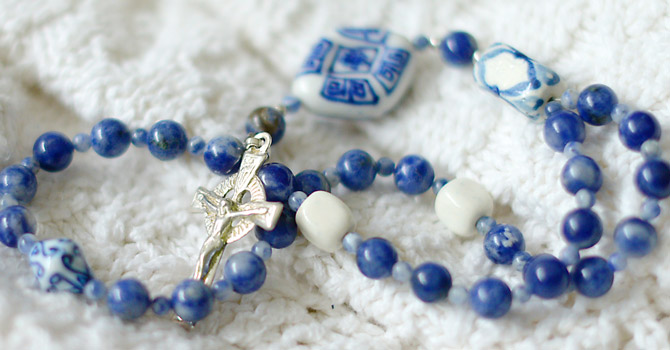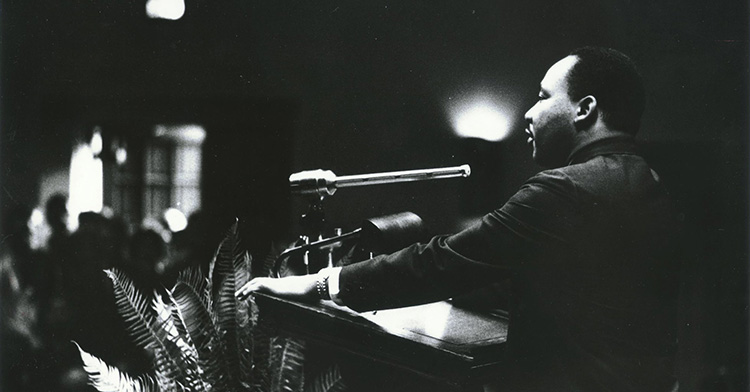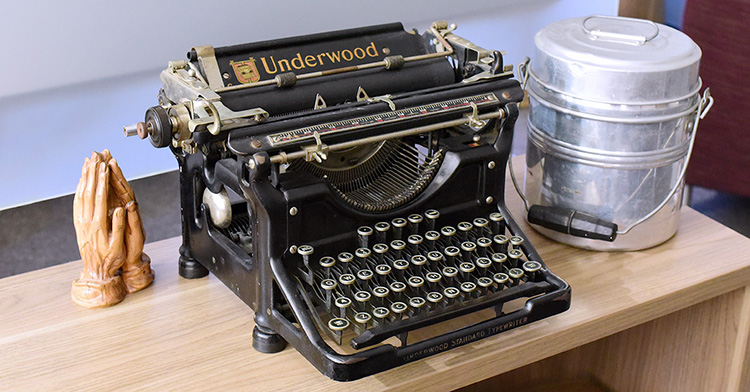If theologian Sarah Coakley had one message about power for Christian institutional leaders, it would focus on “the power that comes through transparency to the divine.”
In an interview on living prayer and leadership, Coakley, the Norris-Hulse Professor of Divinity at the University of Cambridge, said such empowering transparency is cultivated best through an intentional life of prayer.
“Often even ministers don’t think enough about how Christian life is magnetized and electrified by being lived prayerfully,” she said. “When you meet a priest or a minister who is living prayer, you never forget that person. That person may be bumblingly inefficient on the budget, useless about remembering to come to appointments, all other kinds of things that they’re meant to do right, and yet have the most fantastic impact on people’s lives. …
“Prayer has to be at the top of the list of what we’re training people to do in ministry.”
Most seminarians study various forms of prayer. But once they are immersed in congregations or other institutions, the distractions and busyness of the work make it more difficult for them to be leaders who are “living prayer” -- “magnetized and electrified” by an intentional practice of prayer.
As a result, institutional leaders hunger for simple, effective ways to support their spiritual lives. They ask: How can we feed ourselves while also feeding others?
For these leaders, praying with beads is a practice worth trying.
This calendar year, I’ve been experimenting with the practice of praying with beads. Twice a day, whether I am at the office, at home or traveling, I take my prayer beads out of my bag -- and a sense of calm and focus comes over me.
As I finger my prayer beads, crafted out of blue stone beads from New Hampshire, a Russian bead from a friend and beads from one of my mother’s old necklaces, I am able to get in the “zone” of prayer, despite the fragmentation of my day. I have come to look forward to these centering moments.
My practice started in Lent, when I was seeking to grow by trying a new spiritual discipline. Making prayer beads and praying with them combined my love of art with my love of spiritual practices. I had several boxes of old beads and another full of old necklaces waiting to be upcycled. And I remembered my Roman Catholic grandmother years ago having a rosary. Exploring Protestant prayer beads seemed to be an act of traditioned innovation for me.
Prayer beads offer a variety of ways to pray. I started with Kristin Vincent’s ideas in “A Bead and a Prayer: A Beginner’s Guide to Protestant Prayer Beads.” Vincent suggests making a circle of 33 beads representing the life of Christ, along with an invitation bead and a small cross.
Using the ACTS format (adoration, confession, thanksgiving and supplication), the supplicant fingers the beads in four sets of seven, expressing one thought for each bead, and beginning and ending each set with a bead for the Lord’s Prayer. This method challenged me to examine how much time I normally spend praying in each of those areas.
After practicing this format for several months, I turned to “Praying with Beads: Daily Prayers for the Christian Year,” by Nan Lewis Doerr and Virginia Stem Owens, which provides a brief liturgy for morning, noon and evening each week of the liturgical year. My love of liturgy and the church year attracted me to this method, but I also like that the repetition in the format becomes a meditation.
I’ve also experimented with using my prayer beads to pray the Psalms, fingering one bead for each verse. I’m hoping that this technique can help me memorize more Psalms, something that I usually am able to do only when I sing them.
Finally, a friend at a local Baptist church has taught me her church’s practice of making a simple prayer bead string customized to each member’s prayer concerns -- a certain bead signifying a specific child who needs prayer, another an ongoing personal problem, another prayers for a partner, etc. Between each bead is a knot, representing our “knottiness,” or sinfulness.
As I have practiced these methods of praying with beads, I have begun to understand more of Coakley’s words about “living prayer.” And I have seen increasingly how praying with beads can nurture the spiritual lives of Christian leaders:
- Praying with beads provides a steady discipline -- a shape and a frequency for a life of prayer. Beads are rooted in a long-standing spiritual tradition for many religions, yet they can also keep us growing as we experiment with new types of prayer.
- Prayer beads offer a physical, tangible tool that fixes our attention on prayer, when so much that is intangible distracts us as leaders. They can help us pray even when our minds want to wander. They can keep us grounded and connected to God. Their tactile nature can have a settling effect, be an antidote to anxiety and act as a physical touchstone like the breath in yoga or meditation.
- As we attempt to cultivate our leadership, praying with beads can become a metaphor for other things. Rough and bumpy beads can represent the times when our prayer or work life is rough and uneven, difficult to hold and stay with.
- Prayer beads are aesthetically pleasing -- their shape, size, color and feel. Their weight or clinking sound can serve as a cue or an entrance into a time of prayer.
I’ve also witnessed the benefits of prayer beads for laypeople. I’ve helped teach two congregational workshops on prayer beads. The participants included laypeople from a variety of economic and social backgrounds, only some of whom were familiar with praying with beads. But in both settings, the adults as well as the children were drawn in by the process of selecting and stringing the beads, which became a form of meditation itself, as people had to narrow their focus to concentrate on the tactile procedure.
And they appreciated a chance to learn a new way to pray, many of them sharing that they were not very good at praying. One woman hoped that the physical reminder of the beads would help her turn to prayer, rather than CNN, first thing in the morning. “I would be a lot less anxious,” she told me.
Prayer beads are available for purchase on the web, but it can be valuable to make them yourself. You learn about your prayer habits and needs when you have to make decisions about bead color, shape and size.
Do you want beads that are calming? Stimulating? Beads that keep you mindful of other cultures, people and places? That are simple and wooden, or shiny and colorful? That reflect the bumpy, prickly or craggy aspects of the spiritual life? That are smooth and cool to the touch? Do you want to incorporate beads or a cross repurposed from other times and places in your life?
Whatever your prayer beads look like, they can help you cultivate an intentional life of prayer. And if we are to become leaders who are “living prayer,” then we need such practices that will magnetize and electrify our Christian witness.




















